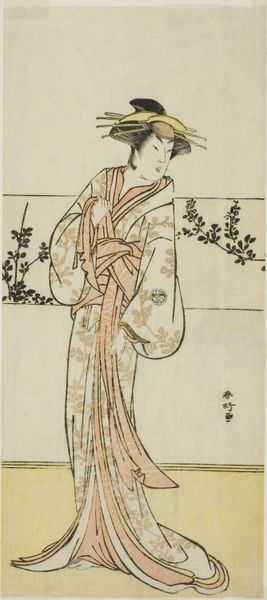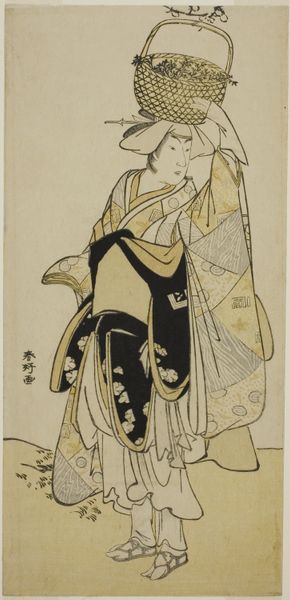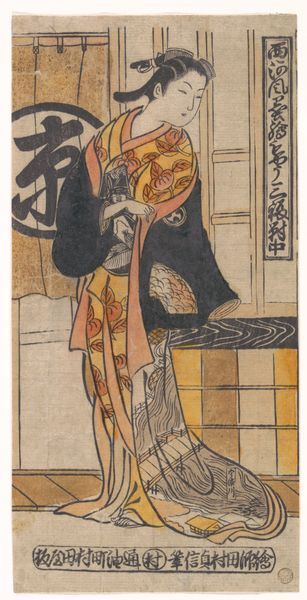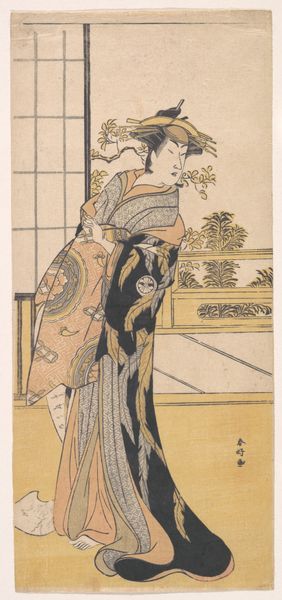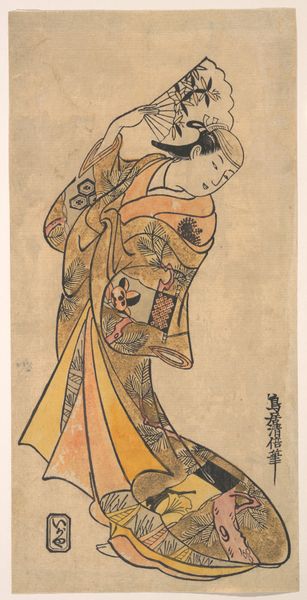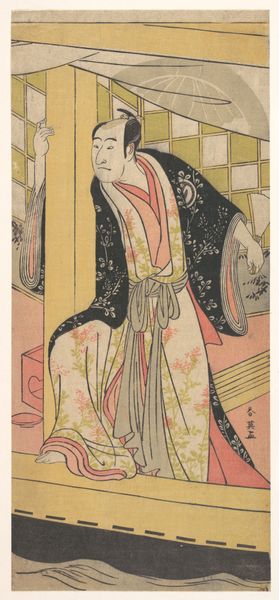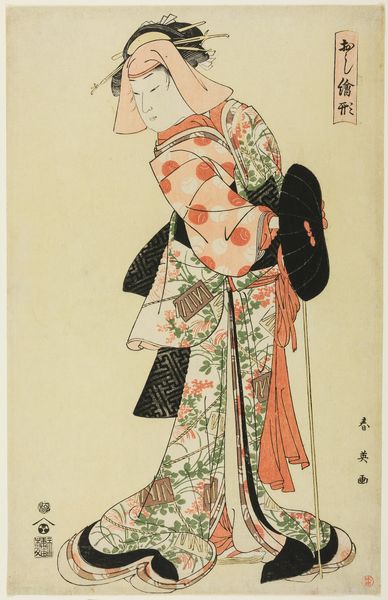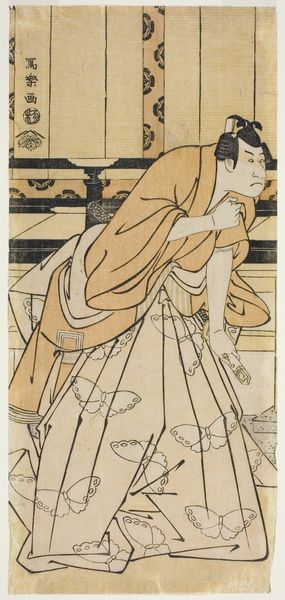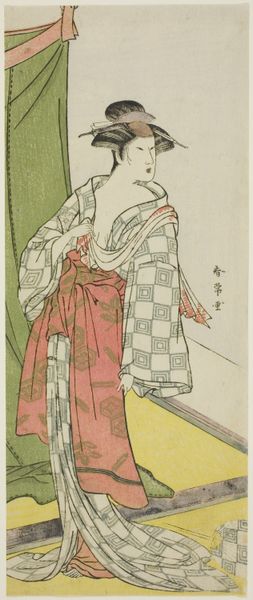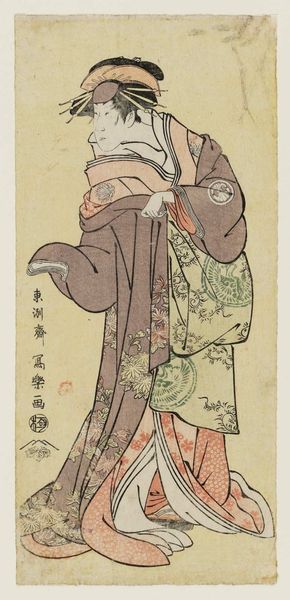
The Actor Segawa Kikunojo III as Okaru in the Play Kanadehon Chushingura, Performed at the Morita Theater in the Eighth Month, 1787 c. 1787
0:00
0:00
print, woodblock-print
#
portrait
# print
#
asian-art
#
ukiyo-e
#
woodblock-print
Dimensions: 32 × 14 cm (12 5/8 × 5 1/2 in.)
Copyright: Public Domain
Editor: This woodblock print, dating from around 1787 by Katsukawa Shun'ei, is titled "The Actor Segawa Kikunojo III as Okaru in the Play Kanadehon Chushingura." I’m immediately drawn to the delicate patterning of the kimono, and how the lines define the figure’s pose. What captures your attention in this piece? Curator: It’s fascinating to consider this image not just as a representation of an actor, but also as a commodity produced and consumed within the urban culture of Edo period Japan. How do the materials themselves—the woodblock, the pigments—shape our understanding of performance and identity? Editor: That's interesting. So, you're thinking about it as something beyond just a pretty picture? Curator: Exactly! Think about the labor involved: the artist, the block carver, the printer, and then the distribution networks. The Ukiyo-e prints like these weren't just passively received; they were actively circulated, collected, and consumed by a burgeoning merchant class, weren't they? Editor: I suppose that makes sense, since mass production makes something more accessible. Curator: Precisely! The accessibility afforded by the woodblock printing process allowed these images to permeate different social strata, shaping ideas about celebrity, beauty, and even current events. Now, what does the materiality suggest about the position of the performing arts? How were they perceived and enjoyed, compared to something like traditional painting? Editor: I see what you mean. A painting feels unique and elevated, whereas a print, being reproducible, might have democratized access to the world of theatre and its stars. Almost like a form of early modern mass media! Curator: That’s right. By focusing on the materials and production process, we gain a richer understanding of the complex interplay between art, labor, and society in the late 18th century. We acknowledge the role of prints not just as aesthetic objects, but also products with their own lifecycle and embedded social meanings. Editor: So looking closely at the material aspects helps unlock a whole new level of understanding of the society that produced the artwork. Thank you.
Comments
No comments
Be the first to comment and join the conversation on the ultimate creative platform.
